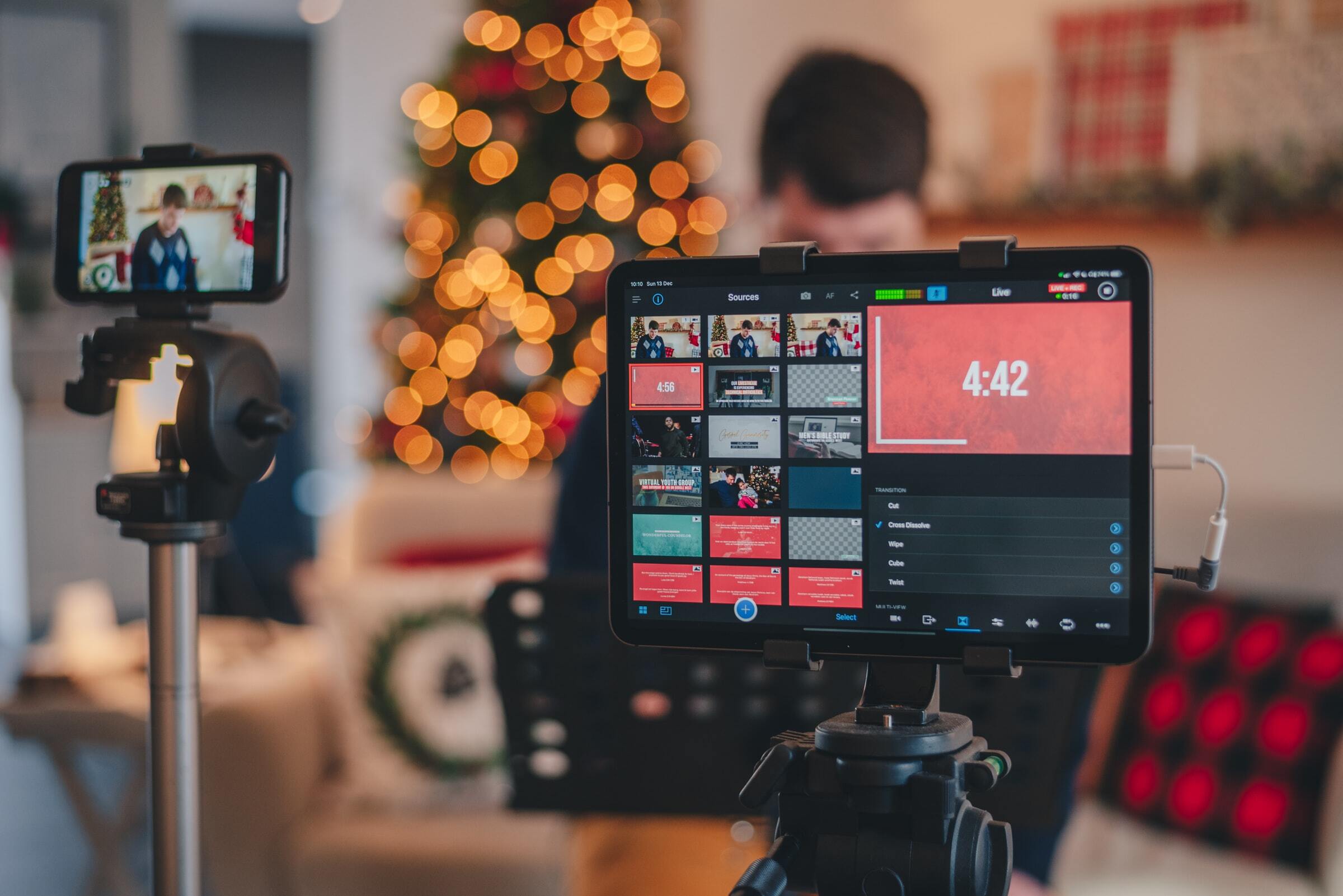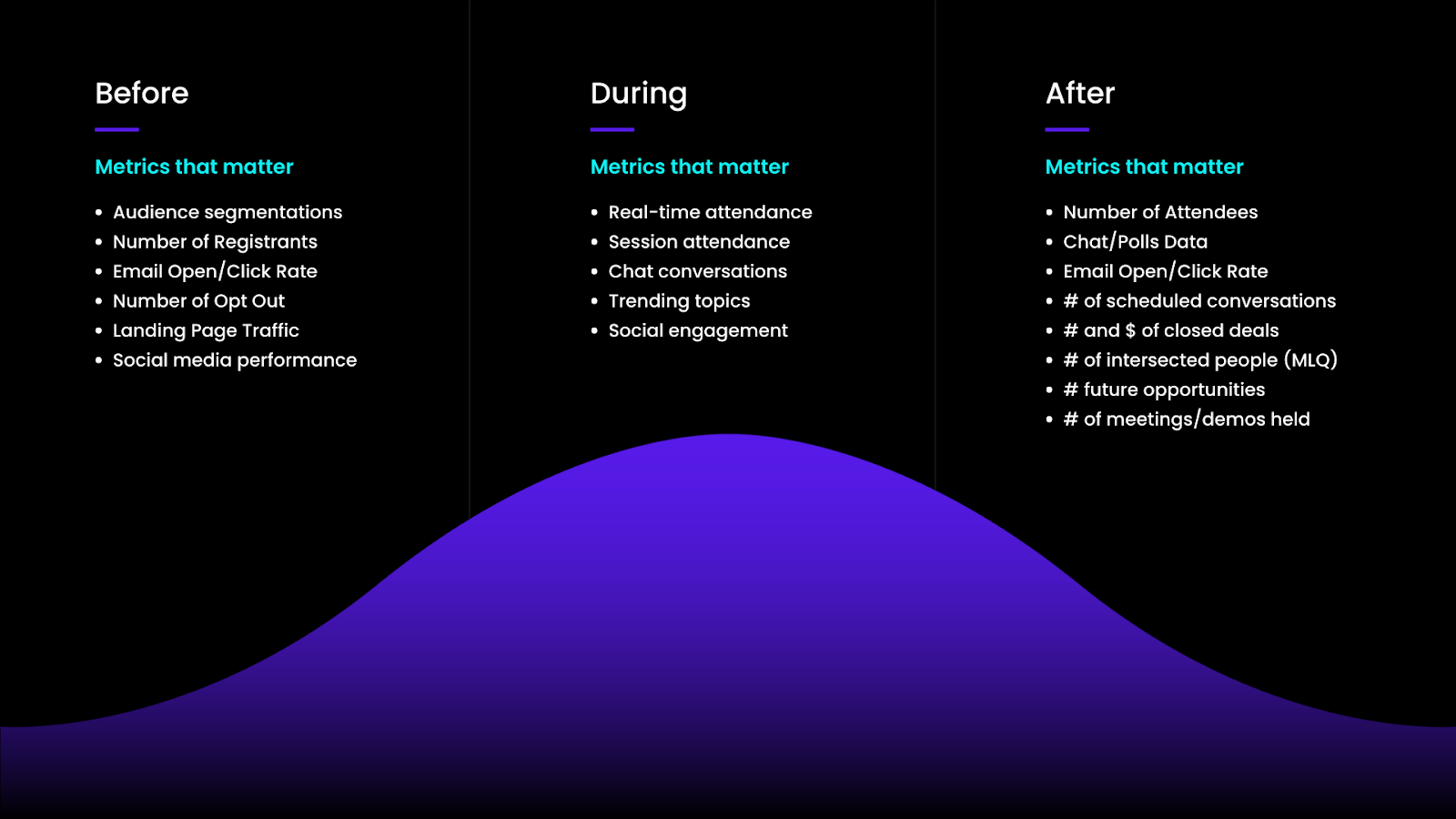Before, During, and After: Host Revenue-Driving Virtual Events using Metrics That Matter
A lot goes into planning and executing a virtual event, and without data to analyze, big plans and budgets can go to waste. That’s because data provides relevant insights on trends and patterns of registrants that can facilitate the process of qualifying leads and closing more deals.
At the end of the day you want actionable information that drives demand, informs your sales team, and optimizes sales pipelines.
In this article, we’ll cover how to get the most of your virtual events with data analytics using Sequel before, during, and after the event:
BEFORE

Set Smart Goals and Key Performance Indicators (KPI’s)
Setting clear goals from the beginning can make sense of the data that is collected during the event. From determining the investment to convert a potential lead into a customer to measuring engagement, KPIs can help make important decisions.
While these metrics will vary depending on your goals and your alignment with your sales team, you might consider leveraging key insights such as:
• Actual attendance numbers and attendance duration
• Number of deals closed
• Qualified Registrants by Segment
• Net New Pipeline from Event

Create content and determine delivery
Once you’ve set your goals and what metrics you’re trying to improve, it’s time to land on the purpose of your event and create rich engaging content around that theme.
Content is the force behind registration and audience engagement, so focus on generating value based on your target audience using the virtual medium as a platform that provides the opportunity to think outside the box taking into consideration accessibility and built-in capabilities. For example:
- What’s the structure of your virtual event: live or on-demand? visual or audio only? Interactive or one-way communication?
- What format are you considering: keynotes, sessions, breakouts?
You might determine that a hybrid component might be just what you need, in one example, Legal Accelerators leveraged sequel’s technology using virtual, in-person, and pre-recorded content for a widely successful outcome:
“It was amazing. Everyone was satisfied by the conference and the way it was organized. The capabilities offered by sequel’s components is one of the main drivers for that result.” – Mihai Carabas, Legal Accelerators Co-Founder
Plan a data-driven marketing strategy
Event insights are a gold mine for event organizers and marketers, and turning this data into action should be a top priority. Here are a few things to consider:
- Identify your target audience
- Leverage your existing contact database
- Measure email open-rates
- Track visitor traffic with landing pages
- Identify the best-performing channels to boost social posts and ads
- Conduct a speaker outreach
It’s also important to create a timeline for promoting your event according to your budget, resources, and partnerships. Consider when is the best time to send emails, the most relevant content format for your customers (is it video, blog posts, podcasts, slides?) and the touchpoints that resonate best with your audience.
DURING

Conduct a check-in
This is the final phase of development and usually happens a few days before the event is ready to go to ensure everything will run smoothly. Pre-launch testing might involve some of the following tasks:
- Test the user experience of your event
- Lead an instructional session for speakers and moderators
- Perform audio and video check
- Develop a plan that provides assistance in case of a glitch during the event
Be present
Create a delightful experience by dedicating an event moderator and support team to solve technical issues, direct attendees to the right place, and receive feedback in real time.
If you are closely listening you can make timely decisions to adjust content on the go in response to attendees’ reactions or create activities that drive interactivity such as launching a poll or call for chat interactions.
Be prepared
Even after you conduct your pre-launch check in, there’s no guarantee that there will be no problems at all during the event, so being prepared is your first line of defense to offer a positive user-experience. However, if you set up a guide and prepare your tech support team and have back-up speakers or hosts, those kinds of issues should have minimal impact.
AFTER

Measure, measure, measure.
Track insights and get a sense of the attendee experience across your virtual event, from attendance to depth of interactions. How many people attended? Which areas were most and least popular? Which ideas worked and which didn’t?
Get an overview or hone into a detailed analysis to make smart data-driven decisions, reinforce the design choices of certain components and identify areas for design improvement around the event.
Follow-up
Set up smart follow-up trigger actions using personalization and strategies that connect to help you build community. Don’t be afraid to repurpose content from your event, nurture leads with on-demand recordings of the events, and post-event resources that can add value for conversion opportunities.
Track sales pipelines
Follow the data! Create performance reports and learnings and come back to your KPIs to measure performance and uncover ROI of your event.

Want to learn more about Sequel’s new HubSpot integration? Take a look.
Want to see Sequel in action? Book a demo today!